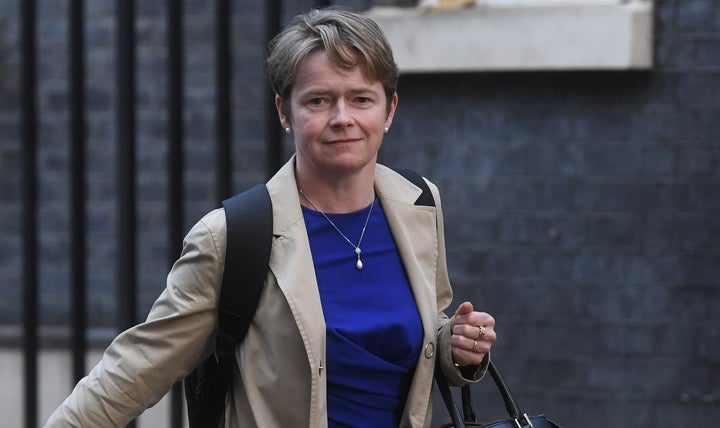
Boris Johnson’s Test and Trace service has hit a key contact tracing target for the first time since May.
The proportion of “close contacts” of people with Covid in England reached was 85.7% for the week ending December 2, new figures showed.
It’s only the second time that the controversial service has passed the 80% target, which the government’s scientific advisers say is needed to make the whole project viable in stemming the spread of the virus.
The contact tracing rate was up from 72.5% the previous week, which was itself a big jump on the 60.5% of the week before that.
The last time that Test and Trace passed the key milestone was in May, when 90.6% of close contacts were reached. Since then the number fell steadily, prompting heavy criticism of chief Dido Harding.
The big driver for the improved performance was a key decision to phone households only once when they have been in contact with a positive coronavirus case, instead of calling individual household members.
Test and Trace has decided to stop making multiple phone calls to the same house to talk to each individual adult, and instead is using one call to communicate with all the residents.
The service had been getting complaints from the public about being “bombarded” with phone calls to the same home and decided in mid November to change its practices.
Last week’s figures were the first time that under-18s in a household were no longer contact traced individually, provided the parent or guardian in the household confirmed they have completed their legal duty to inform their child to self-isolate.
From 27 November, this change was extended to cover adults in the same household, so they have the option to be traced via a single phone call.
“These operational improvements have resulted in an increase in the proportion of contacts reached and the proportion reached within 24 hours,” the department for health and social care said.
One former call centre handler for Test and Trace, Tracey Dunlop, explained on Twitter how ineffective the previous system was.
Test and Trace now has a £22bn budget, equivalent to nearly a fifth of the entire NHS budget each year, and has faced heavy criticism for its use of private sector firms like Serco and Deloitte.
Although it has hugely expanded testing capacity, its testing turnaround times and its poor contact tracing have prompted critics to suggest taxpayers’ money has been wasted on the project.
Overall, the latest Test and Trace figures – which cover the final week of the second national lockdown – reflect the fall in cases seen in recent weeks.
A total of 96,415 people tested positive for Covid-19 in England at least once in the week to December 2.
This is down 13% on the previous week and is the lowest total since the week ending October 7.
Some 195,355 people were identified as coming into “close contact” with someone who had tested positive – defined as spending more than 15 minutes with them at a distance of less than two metres.
The number of contacts identified has notably decreased across the last two weeks.
Testing turnaround times have improved too, with 64.9% of “in-person” test results received within 24 hours.
That’s up on the 54.2% in the previous week, but still well short of the 100% promised by the prime minister in the summer.
Dido Harding, interim executive chair of the National Institute for Health Protection, said: “NHS Test and Trace continues to build on partnerships across national and local government, with business and with the public, and we are now seeing some of the fruits of that work.
“These improvements will help stop transmission of the virus and help protect our communities. This week’s figures show that as the number of people who have used NHS Test and Trace continues to increase, so the service is constantly evolving and improving.”
Health Minister Lord Bethell said: “Today’s figures represent a milestone for NHS Test and Trace and a breakthrough in terms of the effectiveness of its tracing capability.
“The service has made a series of improvements to operations over time, informed by listening to partners and the public, and we are now seeing the positive outcome of that work.”
